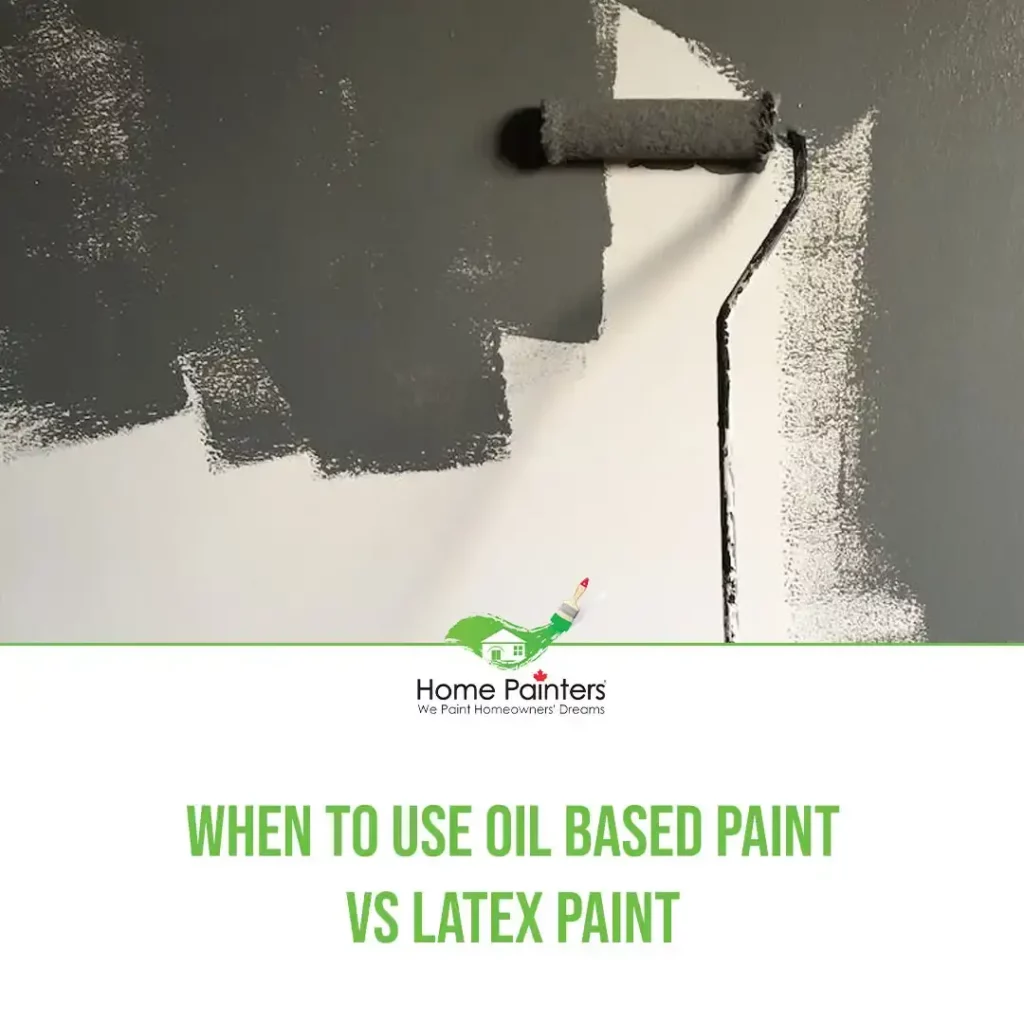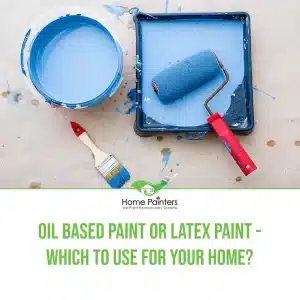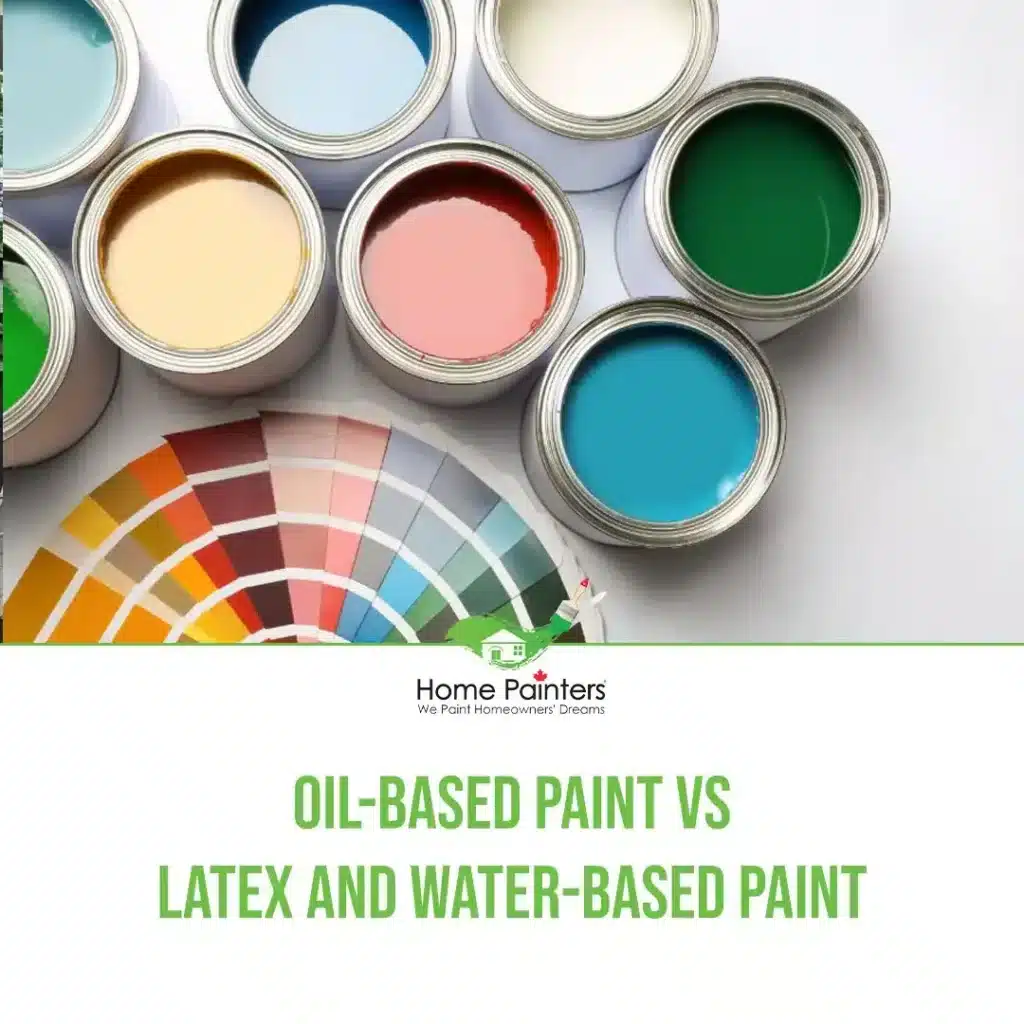
What is Oil-Based Paint?
Oil-based paint is a type of paint that uses a drying oil, such as linseed oil or alkyd, as its primary binder. This means the paint dries through oxidation, wherein the oil reacts with the air to harden and form a protective film. Oil-based paints have been around for centuries and are known for their durability, rich colours, and smooth finish.
When starting a new home project that requires painting, most people would assume that picking the colour is important. While it is, it isn’t the top choice. The most significant and vital task is choosing what type of paint to use. There are a variety of paints to choose from water-based, oil-based, acrylic, latex, and many more. Oil-based paints are used on wood, paintings, and metals.
So, why use oil-based paint? The finishing touch comes out glossy and smooth. It takes days or even weeks to dry, but it does not easily stain. In addition, they are harder to use and are thicker than most other paints. There are many advantages to using oil-based paint.
Why Use An Oil Based Paint
Some people would think that the longer it takes to dry, the more annoying it becomes. Not necessarily, though. Oil-based paint takes much longer to dry than latex paint, but you would have more time to complete other tasks. It’s a bonus.
The paint goes smoothly on the surface, and one coating covers it perfectly. The biggest thing about this kind of paint is that it is good in high-area environments, such as staircases, walls, sinks, etc.
There are several advantages to using oil-based paint for your painting projects:
1. Durability
One of the primary reasons people choose this paint is its exceptional durability. They form a hard, protective film that is moisture-resistant, making them ideal for high-traffic areas and surfaces exposed to the elements. This type of paint is less likely to chip, peel, or crack over time, ensuring a long-lasting finish.
3. Smooth Finish
The slow-drying nature of oil-based paint allows the paint to level out and minimize brush strokes, resulting in a smooth, professional-looking finish.
This is particularly beneficial when painting surfaces such as woodwork, trim, and furniture, where a flawless finish is desired.
2. Superior Coverage
Oil-based paint is known for its excellent coverage, often requiring fewer coats than water-based alternatives. This can save you both time and money, as you’ll need less paint to achieve the desired result. The high opacity of oil-based paint also makes it ideal for covering stains, dark colours, or other imperfections on the surface.
4. Rich, Vibrant Colours
Oil-based paints are known for their rich, vibrant colours that retain their depth and lustre over time. The pigments are suspended in the oil, which allows for a more even distribution of colour and a higher concentration of pigment. This results in a more vibrant and long-lasting colour.
Disadvantages: Oil Based Paint Vs Latex
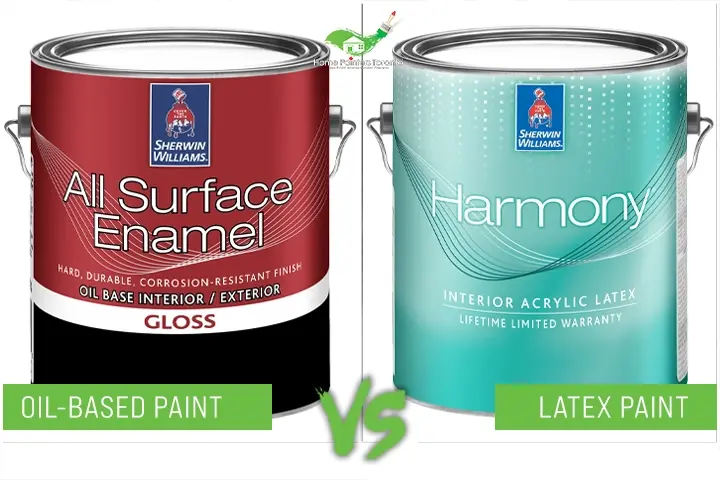
Like everything in life, there are advantages and disadvantages. The disadvantage is that it has a powerful odour, compared to water-based paint. This essentially means that it will take longer to dry. It is also harder to clean, but that doesn’t seem too bad.
Taking longer dry means that you need complete care in your cleaning. The work is already messy, so try to use extra precautions precaution. Make sure that there is no contact with the wet surfaces. As time passes, the paint will start to harden, causing splitting. If the wood shrinks, splitting almost always happens. If you want a flawless finish on your surfaces, using a pure bristle brush will do just the trick.
When to Use Oil-Based Paint
While the best oil-based paint offers numerous benefits, it’s essential to know when it’s the most appropriate choice for a project. Here are some instances where they are the best option:
Wood surfaces: They are ideal for wood surfaces, as they penetrate the wood fibres and provide excellent adhesion. It’s also less likely to raise the wood grain, resulting in a smoother finish.
High-traffic areas: Due to their durability, they are an excellent choice for high-traffic areas such as doors, trim, and baseboards, where scuffs and wear are more likely to occur.
Exterior surfaces: The moisture-resistant properties of this paint make it ideal for exterior surfaces exposed to the elements, such as siding, fences, and outdoor furniture.
Stained or previously painted surfaces: They are highly effective at covering stains and adhering to previously painted surfaces, making them a suitable choice for renovation projects.
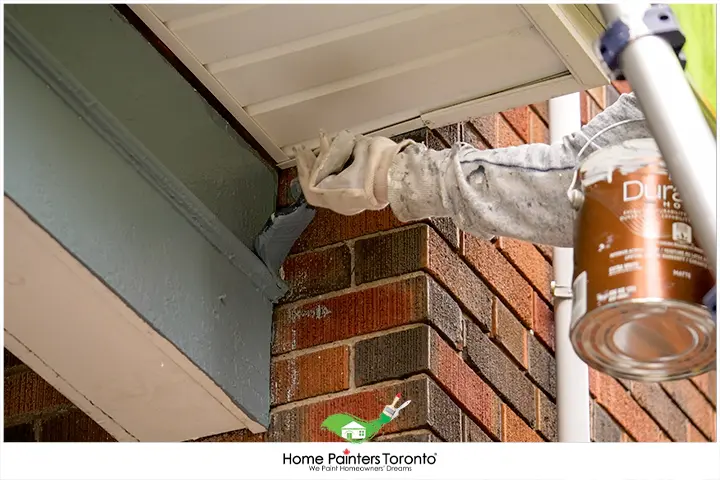
Supplies You Need For Oil-Based Paint
During any painting, it is essential to have the right tools by your side. This will make for an enjoyable yet efficient experience for yourself and others. Two main types of brushes are natural-hair bristles and polyester or nylon brushes. In this case, when using oil paint, you should use a natural bristle brush.
Natural bristle brushes work best when topping a coat and applying enamels. If you want the best paint brush, it will cost you a bit more, but it will be worth it when your surface looks clean and smooth for multiple years. In addition, when you want the job done correctly, using the right supplies is needed. Use small brushes for small tasks and large brushes to cover large areas. This way, the supply in your hand matches the job you are about to tackle, whether interior or exterior.


Important Considerations
When using oil-based, there are elements to consider. It is essential not to pour this paint down the drain. Instead, you should contact your local waste management to see how to dispose of the paint safely. In addition, many cities have local waste collection areas to dispose of old paint. Using a bath sink or laundry for minor cleanups is okay whether the formula is latex, water-based, or oil.
Verdict On Oil-Based Paint
Oil-based paint is highly recommended if you start a home project involving any wood. It is much more durable and resists stains, unlike other types of paint. You can use it for kitchens, trims, bathrooms, and other exteriors. Although this type of paint warrants a lot of work, life does too. Nothing ever comes easy. The finishing touch of using oil paints is smooth and glossy.
Even from far away, it looks brand new! When people enter your house, they will surely be amazed, which warrants such a good feeling. Ultimately, the decision relies solely on the homeowner and what is best for their home.
Conclusion
While oil-based paint may not be the right choice for every project, its durability, superior coverage, smooth finish, and rich colours make it an excellent option for many applications. By understanding the pros and cons, and their appropriate uses, you can make an informed decision and achieve the best results for your painting project. So, the next time you’re considering which type of paint to use, don’t overlook the tried-and-true advantages of oil-based paint.

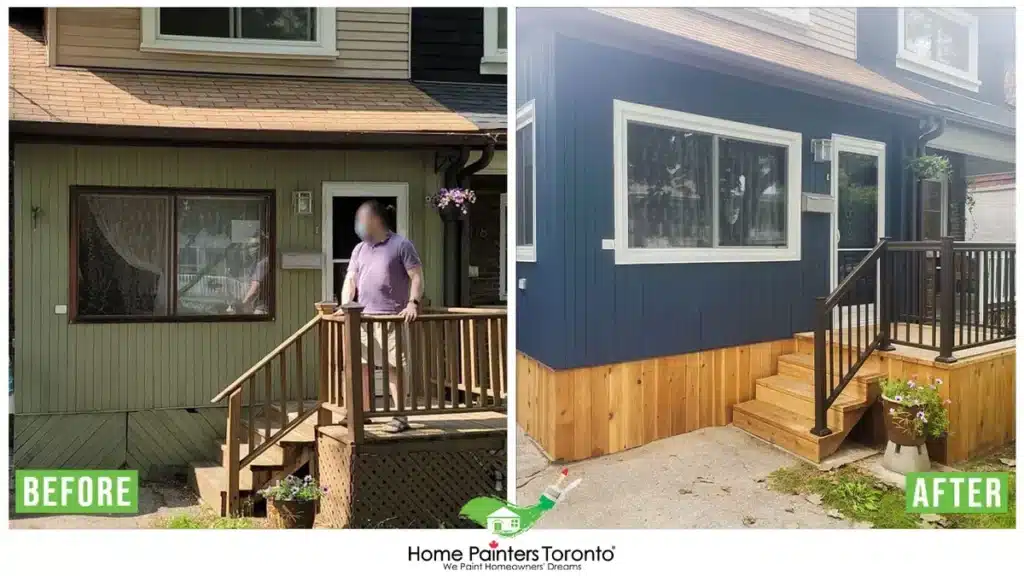
More Interesting Blogs Related to
“WHY USE AN OIL-BASED PAINT?”
Need someone else to handle all the interior painting work for you? Or maybe it’s an exterior painting that you need to be done. Whatever it is, allow our professional Toronto painters to do the job quickly and correctly! Call Home Painters Toronto at 416.494.9095 or email [email protected] for a FREE quote. And don’t forget to follow us on all our social channels below!


